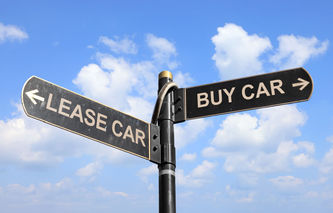When thinking about buying a new car, we instinctively look at local or online dealerships. But there are other options too, such as exporting a car from Germany or perhaps importing a car into the United States.
It's pretty common to hear claims that a friend or family member paid for a trip to Germany with the money they saved by importing their brand new Mercedes or BMW into the United States. While it might sound pretty tempting to buy a car overseas, there are several significant factors to consider before flying off to Japan or Germany.
In this article, we're going to discuss how to go about importing a car from another country. That discussion will include very real considerations such as an imported automobile's ability to meet local emission standards. We'll also discuss some of the finer details of the process such as shipping delays and insuring the vehicle. If the new car is damaged during its journey, the repairs need to be covered by insurance.
How to Import a Car
What exactly are some of the items to consider before importing a car from Japan or Europe, or any other country for that matter? The first thing to think about is the free market law of supply and demand.
If there were significant cost savings associated with buying a car overseas, and exporting them back to the U.S., then market forces would have set up an entire network of businesses competing in this area. It wouldn't even be necessary to fly to Germany; it would be possible to simply arrange for the export right over the phone. After all, if one individual could do it and save money, then why couldn't a company with contacts all over the world do it even more efficiently?
An overseas car-buying network does not exist. That tells us that if it's possible to save any money on the car, someone's going to have to work for it; there are many rules and regulations surrounding the importing of cars.
Vehicle Safety and Emission Standards
One of the most important concerns when purchasing a car abroad has to do with local automobile safety and emission standards. Overall, the U.S. has relatively high emissions and safety standards for cars; and that adds to their manufacturing costs. Automobile manufacturers will typically produce and sell cars that only meet local standards.
If the car is manufactured to be sold in Germany, it will meet safety and emissions standards established in Europe. Unfortunately, those standards might not be sufficient to meet the standards here in America.
One of the first items to check is the car meets these standards, or can be inexpensively modified to comply with them. The EPA publishes a detailed fact sheet describing the emissions requirements for imported vehicles. A copy of those standards can be downloaded by visiting the EPA website.
Shipping Documentation
When a car is exported to the U.S., Customs will want to review documentation that outlines both the ownership of the vehicle as well as its ability to meet U.S. standards. Typically, these documents include a bill of lading, bill of sale, and possibly foreign registration materials. EPA forms also need to be completed, verifying the car meets, or has been modified to meet, the emissions and safety standards established by the United States Department of Transportation and EPA.
Commercial Importers
If the car doesn't meet U.S. emissions standards, and there isn't time, or the desire, to have the car modified overseas, then it's possible to work through one of several Independent Commercial Importers, or ICIs. These businesses can be found in the EPA link supplied earlier. Keep in mind that it will not be possible to drive the vehicle until the ICI has completed their work to bring the car into compliance.
If the car does not meet local standards, owners can expect to pay thousands of dollars to have a car brought into compliance. Not only will EPA standards apply to emissions, but the DOT also has standards for tires, window glass, headlamps, and similar car parts that might be considered obvious to the safety of passengers and drivers of the vehicle.
Taxes and Duties on Imported Cars
A duty needs to be paid on all new and used vehicles imported into the United States. There are some relatively small exemptions that might apply, but it's reasonable to figure about 2.5% on cars and 25% on vehicles that are considered trucks. This rate is based on the price paid for the vehicle.
Gas Guzzler Taxes
In addition to paying a duty, certain cars are also subject to a gas guzzler tax. This tax is based on the combined fuel economy rating of the vehicle. If the combined rating is less than 22.5 miles per gallon, then a gas guzzler tax may apply. That tax is reported on the IRS Form 720.
Insuring and Shipping Cars
Whenever shipping something overseas, even a car, a "roll on" and/or "roll off" fee will likely apply. In addition, the shipping company may not like it if the car has a full tank of gasoline, and may charge a fee to drain some of the fuel from the car's tank.
Depending on the destination and location of purchase, expect to pay $1,000 to $3,000 to ship a car back to the United States. It's also possible to export the car by airplane, but expect to pay $5,000 to $10,000 for this kind of service. If the intention is to drive the car in the U.S. when it arrives, don't forget to arrange for automobile insurance.
Arrival Times for Imported Cars
If shipping the car from Europe to the East Coast of the U.S., expect the car to arrive in roughly ten days. If the owner doesn't live on the East Coast, then they will have to arrange to have the automobile driven to their home, or shipped by truck across America. This process will add several more days until the car's arrival.
Cars exported from Japan will take about 15 days to arrive on the West Coast. It's also necessary to work around the shipper's sailing schedule. For example, most shippers sail from Japan once every three or four days.
Buying a Car Overseas
Unless the buyer is fluent in German or Japanese, contracts will need to be translated into English. Buyers will also have to arrange for payment terms, either in U.S. dollars or local currency such as the euro or yen. Remember that currency rates fluctuate, so make sure to include some leeway, just in case the dollar weakens against the euro while traveling.
Finally, when traveling to a foreign country to pick out the car, make sure there is enough time to complete the transaction. Funds transferred internationally will take longer to clear the banking system than those domestically. Don't wait until the last minute to get the process started, or it might be necessary to extend a stay until it's completed.



